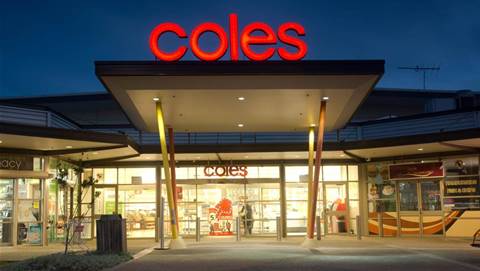Athletics footwear brand Brooks has adopted a network mapping and modelling tool as part of a zero trust deployment, making it the latest in a flood of companies embracing new visualisation techniques to secure their expanding network edge.

The adoption of Illumio’s Zero Trust Segmentation platform will enable Brooks to segment its network and visualise the impact of those configuration changes, ensuring that it can model and limit the impact of any potential ransomware breach.
The firm’s security staff can leverage the visualisation tool to view all communications and traffic on the company’s network, charting the flow of traffic between workflows, devices, and the Internet.
That data can then be used to set the parameters for highly granular segmentation policies, which serve as ‘blast doors’ to contain the damage that might be caused by a potential malware infection.
The visualisation technology “is a strategic technology in our work to protect the business against ransomware, which is a top priority not only for my team but for the company overall,” explained Ryan Fried, senior security engineer at Brooks.
“Visualisation of our risk across the network [means] we’re able to automate and create segmentation policies which control unwanted communications, and proactively contain a potential breach to limit its impact on the organisation.”
IT can see clearly now
Visualisation tools have become increasingly important as digital transformation efforts completely reshape the network edge, with many companies embracing new visualisation tools or going all-in on digital twins that provide interactive, real-time visibility of business workflows and functional ecosystems.
Increased use of remote sensors is providing robust data sets to feed digital twins, in a process the Australian Information Industry Association (AIIA) recently flagged as a national priority due to its ability to manage bushfires, floods, and other issues with ‘disaster dashboard’ apps.
“The dynamism and agility of the digital twin model, when paired with rich streams of data, could be a game-changer for assessing flood-prone areas,” AIIA CEO Simon Bush recently said in renewing the organisation’s call for a formal Office of National Digital Twin to co-ordinate digital modelling of Australia’s natural and built environments.
“We encourage governments to advance the use of digital twins as dynamic mapping tools that are fit for the challenges of the 21st century.”
Existing flood modelling is often based on analogue maps and decades-old models that lack the detail necessary to do detailed impact modelling, Associate Professor Andrew Butt of the RMIT University Centre for Urban Research noted.
“Where data is out of date or inconsistent, development decisions will be made without fully anticipating the risks that could affect the land on which our homes and businesses are built,” he said, calling for “a joined-up approach to data analytics and sophisticated technologies that can be accessed by decision-makers across the board.”
“Sound and dynamic modelling can better inform planning decisions at both the local and state government levels.”
Looking over the edge
Just as Brooks is leveraging visualisation to model the potential impact of a security incident on its network environment, digital twins have caught on with the likes of national wholesale network operator NBN Co, which was recently found to be actively hiring two digital-twin specialists to use software visualisation that would aggregate current and historical traffic data to model operational networks for proof-of-concept activities.
The approach has rapidly gained currency in other industrial environments and anywhere that businesses operate real-world infrastructure, with Woodside Energy monitoring its operations in a cloud-hosted virtual plant and Endeavour Energy recently kicking off an infrastructure scanning project to help it simulate potential flood levels and their impact on its infrastructure.
Transport for NSW (TfNSW), for its part, has flagged a real-time digital twin as one of six key technologies underscoring its ongoing 10-Year Blueprint, noting that “technology and data create exciting new possibilities for how mobility is delivered and experienced.”
“These technology capabilities work together to deliver personalised and connected journeys which… provide tangible benefits for customers’ mobility,” the agency notes.
“The intelligent sensors that provide real-time data to the Digital Twin and intelligent systems work collectively to support the technology stack and make the customer benefits possible.”
Living on the edge
Digital twins are integral to Industry 4.0, which will see the manufacturing sector leveraging digital technologies to transition from mass production into more responsive, tailor-made production facilities built around 3D printing, AI-based quality control, autonomous robotics, and more.
Due to the massive data volumes generated by contemporary industrial equipment, Industry 4.0 facilities will typically have onsite mini data centres capable of storing and processing masses of information from the equipment in the facility – as well as transmitting summary information back to headquarters decision-makers via 5G, SD-WAN or other communications services.
“The future of digital twins seems almost infinite, helping manufacturers test and interact with sensors embedded in functioning products, offering real-time visibility into system performance and ensuring timely maintenance,” said Abhishek Paul Choudhury, senior disruptive tech analyst at GlobalData, which recently flagged digital twin technology as a fundamental driver for Industry 4.0 adoption.
“They are continually acquiring new skills and capabilities to produce the insights required to improve goods and processes.”




.png&h=140&w=231&c=1&s=0)



 Forrester Technology & Innovation APAC 2023
Forrester Technology & Innovation APAC 2023

















